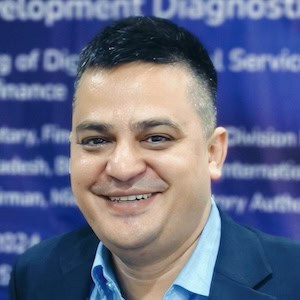-
Measure for Measure Series: Data, data everywhere? Creating bottom up approach to harnessing information
These days, it’s not just about measuring how much change has happened. Increasingly, the focus is on the value of that change in anything from, say, the value of amenity trees to the value of low-level dementia. The challenge now is not so much how to measure, but which measurement approach should I use for a particular outcome?
- Categories
- Impact Assessment
-
Demand Forecasting Takes Off: How improved strategic demand forecasting is helping global health investors, manufacturers and donors
Poor forecasting of expected demand for key products is a pervasive problem in global health. It can lead to the waste of unsold drugs, instability in the prices and availability of essential products, and even drug shortages, resulting in incomplete treatments and drug resistance. But as the Center for Global Development reports, global health funders are making important progress on the issue.
- Categories
- Health Care
-
NexThought Monday : Why mobile money is conspicuously ahead of other mobile-for-development sectors
So what is it about mobile money—and in particular mobile payments — that sets it apart from the other mobile application areas? I’d highlight four intrinsic demand-side aspects, leaving aside all the business model and implementation stuff.
- Categories
- Technology
-
A Feast for the Senses: Global health innovations in sight and sound – Bi-weekly Checkup, 7/5/13
Some of the coolest innovations to cross our radar screen in the past few weeks have involved vision and hearing – whether it’s enhancing them in doctors, or improving them in patients. This Bi-weekly Checkup explores some of the sense-focused innovations that have caught my eye (sorry) because of their potential impact on patients at the base of the pyramid.
- Categories
- Health Care
-
Tired of Bad Products? : Grameen Foundation is too, let’s do something about it
For the next year, Grameen Foundation, in partnership with the Citi Foundation, will focus on sharing what we have learned from our own human-centered product design methodologies. We will be creating a dialogue about the importance of understanding client habits and behaviors, using available data to generate client insights, and then using these insights to design products that meet down-market client needs as well as the needs of financial services providers.
- Categories
- Environment, Technology
- Tags
- product design
-
The 2013 Microfinance Barometer: Who will serve the next billion clients?
2.5 billion people lack access to financial services globally. The 2013 Microfinance Barometer contrasts this need with an overview of the institutions currently serving the sector. Based on data from 1,400 institutions reaching 94 million clients, the report shows a diverse, established microfinance sector - and points to the need for more models to bring financial services to the next billion clients.
- Categories
- Education
-
The Social Angel Movement in India : How it’s building the impact ecosystem
Ultimately, when making an investment, angels should really be looking at the entrepreneur – does he or she lead with a moral imagination? Even if financial returns are lower, there is often more gratification in seeing diversified risk spread through communities in the form of continuing social impact, be it through building sustainable ecosystems, creating jobs for the BoP or fuelling innovative business models across numerous sectors.
- Categories
- Impact Assessment
-
Keeping Up with the Indians: Exploring emerging practices in a health care innovation powerhouse
Extending health services to the 350 million living below the poverty line in India is no easy task. But due to necessity and ingenuity, the country has become a vibrant testing ground for new solutions that help meet the needs of its large, diverse population. In this post from CHMI, Aarthi Rao explores some of the approaches that have made India a powerhouse in health care innovation.
- Categories
- Health Care










